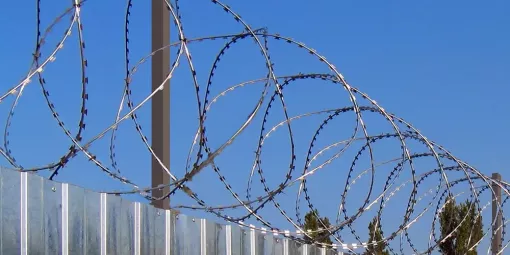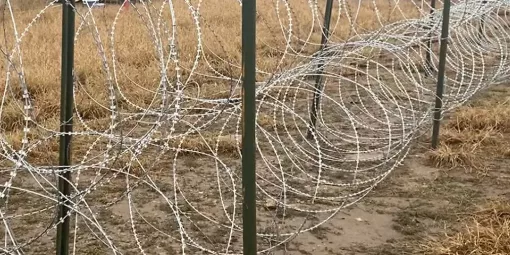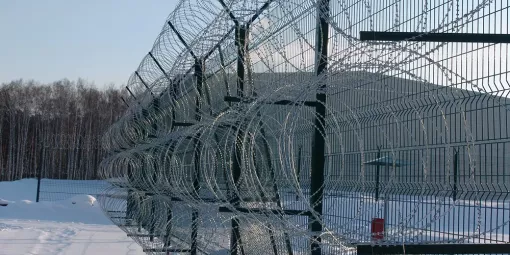Egoza Barrier Installation Methods
Egoza barrier installation methods vary depending on the type of terrain, landscape features, available support structures, and required level of protection. All installation options are based on the versatility of razor wire and its ability to adapt to various operating conditions. Egoza barriers can be mounted on existing fences, directly on the ground, or on mobile frames. This enables their use in any situation – from securing permanent industrial sites to rapid deployment in field conditions. Proper installation is critical not only for the effectiveness of the barrier but also for its longevity, load resistance, and personnel safety.
Egoza's structural simplicity is combined with technological flexibility. Dozens of installation variations can be implemented using the same core material – razor wire – from traditional concertina wire on brackets to complex multi-level combined structures. This makes the system suitable for both stationary and mobile or temporary applications.
Fence-Mounted Installation – The Most Common Method
Mounting Egoza on a fence is a widely used and cost-effective solution. Special brackets are fixed to the top of the fence to support a concertina wire or flat barrier. This method requires no replacement of the existing fence and easily adapts to any type – concrete, metal, mesh, or brick. The most commonly used coils are 400–900 mm in diameter, or flat barriers installed along the top. This is an optimal solution for industrial facilities, warehouses, institutions, office buildings, and residential complexes.
Ground Installation – Autonomy and Mobility
If no fence is available, Egoza can be installed directly on the ground. In such cases, concertina or pyramid barriers are used, secured with stakes, screw piles, or rebar. Ground installation is suitable for temporary security at construction sites, protected zones, field camps, or during natural disasters and emergencies. This method requires no support structures and is easily scalable. It is effective even on uneven or unstable ground, including slopes, embankments, and waterfronts.
Combined Installation – Flexibility for Every Section
In complex scenarios, a combined method is used – different types of barriers are installed on various sections of the perimeter. For example, a concertina is mounted on the fence, a second line runs along the ground, and a pyramid barrier is installed on uneven terrain. Combined systems offer maximum flexibility, allowing reinforcement of vulnerable points, material savings, and tailored protection for specific conditions.
Such setups require detailed planning and precise coordination between all components. This is especially important for extended or non-uniform perimeters, such as industrial zones, logistics terminals, and guarded borders.
Choosing Mounting Hardware and Accessories
For all installation methods, it is essential to select the proper components – brackets, clips, rebar, wire, anchors, and clamps. All parts must be compatible with the barrier material and corrosion-resistant. For ground installation, screw piles are key to providing structural stability without the need for concrete. For fence-mounted setups, selecting the correct bracket shape and angle is vital – especially in high-wind areas.
Safety During Installation
All Egoza installation work must be performed using personal protective equipment: gloves, goggles, and protective clothing. Razor-sharp blades pose a real hazard to installers, especially in the event of accidental contact or sudden coil release. At least two workers should perform the task, with safety measures in place for elevated installations. Using proper tools and following safety protocols is as important as choosing the right barrier design.
Maintenance and Inspection Recommendations
After installation, the barrier should be inspected regularly to check coil tension, fastening integrity, corrosion, and physical damage. Damaged sections can be replaced locally, or additional components added as needed. In combined systems, special attention should be paid to transition zones between installation types, as these are the most common weak points.
When to Use Each Installation Type
If the site already has a fence, the optimal choice is fence-mounted installation. For open fields, use ground installation. On complex terrain or mixed perimeters, go with combined installation. Each method has its advantages and limitations, but a well-thought-out approach ensures effective adaptation to any conditions.
During the planning stage, also consider product delivery and transportation, installation timeframes, and workforce availability. These factors directly affect the choice of structure and its long-term durability.


